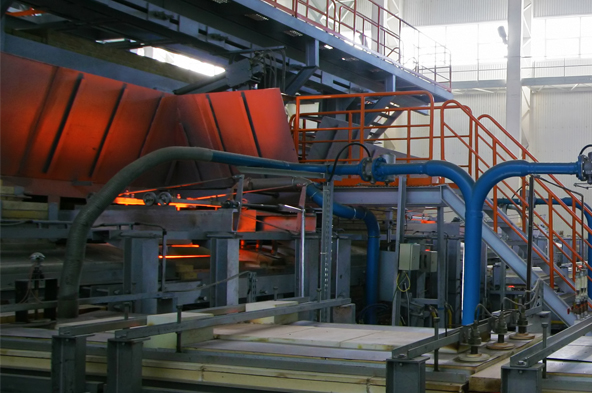
Few industries burn through energy like glass manufacturing. Behind every pane, bottle, and container is a process powered by extreme heat and continuous motion. Melting furnaces run above 1,500°C, furnaces never shut down, and quality standards leave no room for error. This is one of the most energy-intensive sectors in global industry, right alongside steel, cement, and chemicals.
But all that energy doesn’t just go into the product, it also escapes up the stack. In most plants, a significant share of that high-temperature exhaust is simply vented into the atmosphere. Waste heat recovery offers a way to turn that loss into value, capturing thermal energy that’s already been paid for and redirecting it into useful applications.
At the core of every glass plant is the melting furnace, where silica, soda ash, limestone, and other raw materials are fused into molten glass. This process requires extreme heat, typically around 1,400°C to 2,200°C (2,552°F to 3,992°F).
Most facilities use regenerative or recuperative furnaces to improve thermal efficiency, but even the best-designed systems still expel enormous volumes of hot gases. Exhaust temperatures often remain above 500°C even after passing through regenerators.
Once a furnace is ignited, it may run continuously for up to 15 years before a complete rebuild. That means day and night energy consumption, including weekends and holidays. Shutting down and restarting a furnace can cost millions in downtime, repairs, and lost production, not to mention the thermal stress that can damage refractory linings.
This 24/7 demand locks manufacturers into high fuel consumption patterns, often making energy the single largest operational cost outside of raw materials. And the 15-year runtime makes large-scale efficiency upgrades near impossible.
The primary melting furnace in a float or container glass facility emits large volumes of hot exhaust gases that often exceed 1000°C. While some systems use regenerators to preheat combustion air, much of this thermal energy is still vented to the atmosphere.
By installing air-to-water heat exchangers on the exhaust ductwork (after dilution or staged cooling when the temperatures are closer to 600°C), manufacturers can extract usable thermal energy from these high-temperature streams. The heat is then transferred from flue gases to water through a heat exchanger. The resulting hot water can reach temperatures in the 80–120°C range.
This recovered hot water can then be:
Once glass is formed – whether it’s a bottle, pane, or fiber – it enters the annealing stage, where it must be cooled gradually to release internal stresses and prevent breakage. This is done in long, tunnel-like ovens called lehrs, which maintain a carefully controlled temperature gradient over tens of meters. These lines release steady streams of warm air (150–300°C), typically through rooftop vents.
What annealing lines lack in heat intensity, they make up for in volume and consistency. These lines run continuously and exhaust a steady stream of warm air (150–300°C). In larger container glass plants, where dozens of parallel lehrs may be operating, this adds up to a massive and predictable stream of recoverable thermal energy. With a waste heat recovery system, plants can generate a consistent source of medium-temperature water (70–90°C), ideal for use in boiler feedwater preheating or domestic hot water systems.
Beyond the melting and forming stages, glass manufacturing plants depend heavily on support systems that also generate waste heat, particularly in compressor rooms and equipment cooling setups.
Air-cooled compressors, motor housings, and electric drives can be retrofitted with closed-loop air-to-water heat exchangers. Instead of dumping hot air into the facility, systems recirculate it through coils that heat water on the other side. The recovered heat raises water temperatures to 40–70°C, which is ideal for use in preheating systems, mold cleaning stations, or even domestic hot water needs within the facility.
Glass manufacturing will always be energy-intensive, but that doesn’t mean all that heat has to be wasted. Air-to-water waste heat recovery offers a scalable, cost-effective path to capturing what’s already being paid for and turning it into a practical asset. Integrating WHR into furnaces, annealing lines, and auxiliary systems can make a measurable impact.

ENERVEX can make that integration seamless. With full project delivery including system design, installation, and long-term support, ENERVEX’s RHX Roof-Top Waste Heat Recovery System is built to deliver results without interrupting operations. The RHX installs quickly, bypasses during maintenance, and converts high-temperature exhaust into usable hot water without causing production delays.
Visit enervex.com to learn how we can help your plant recover energy, lower emissions, and keep performance on track.